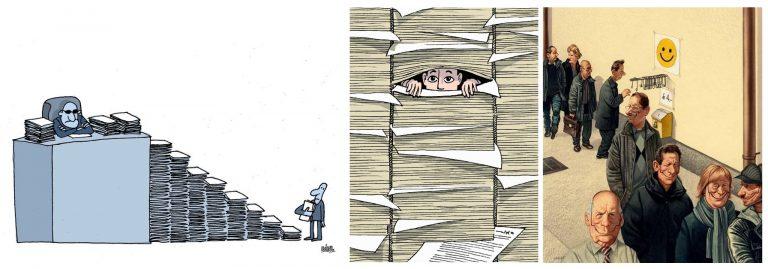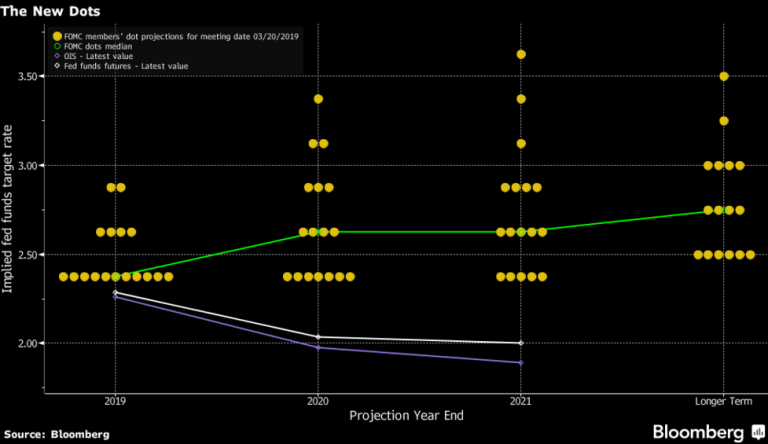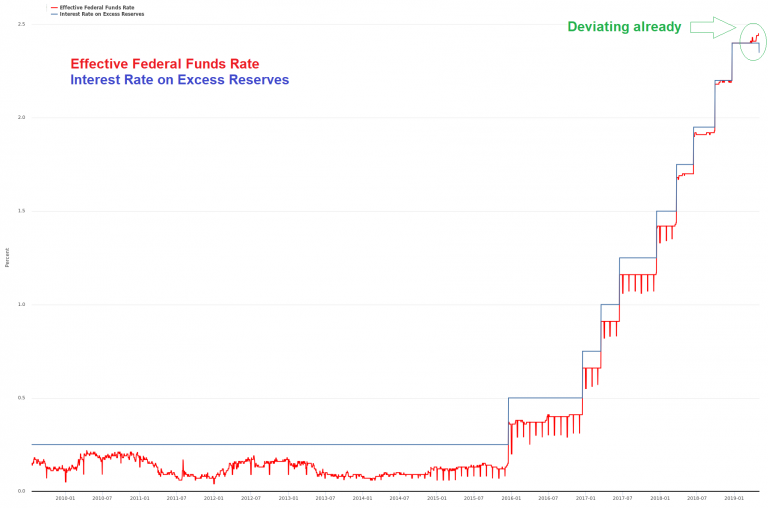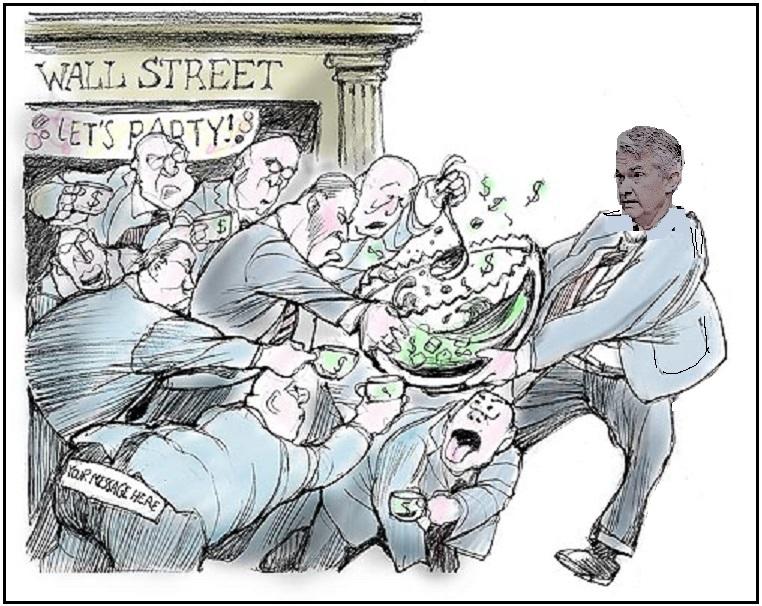Authored by EconomicPrism’s MN Gordon, annotated by Acting-Man’s Pater Tenebrarum,
Fake Work
Clarity. Simplicity. Elegance. These fundamentals are all in short supply. But are they in high demand? As far as we can tell, hardly a soul among us gives much of a rip about any of them. Instead, nearly everyone wants things to be more muddled, more complicated, and more crude with each passing day. That’s where the high demand is.
One can always meet the perils of overweening bureaucracy with pretend happiness… [PT]
For example, executing and delivering work in accordance with the terms and conditions of a professional services contract these days is utterly dreadful. The real work is secondary to fake work, trivialities, and minutia. Superfluous paperwork and an encumbrance of mandatory web-based tools are immense time and capital sucks.
While each T & C may have been developed for one good reason or another, over time, they’ve piled up into something that’s an unworkable mess. But like tax law, or local zoning codes, they must be followed with arduous rigor.
Crushing futility… [PT]
What’s more, many livelihoods depend on all the fake work that’s now built into what should be a simple contract. Auditors, contract administrators, accountants, MBAs, spreadsheet jockeys, risk managers, and many other fake professionals, run about with rank importance. What would happen to these plate spinners if the fake work disappeared?
Without all the unnecessary rigmarole, the unemployment rate would quadruple overnight. Hence, like fake money, fake work is piled on by the boatload to stimulate the need for more fake work. And like a handshake agreement – or sound money – the return to an era of greater clarity, simplicity, and elegance is mere wishful thinking.
Plotted Dots
So, too, clarity, simplicity, and elegance have disappeared from monetary policy. Today’s fake money requires a crude network of central planners, and a crude system of price fixing. The underlying theory of it all is that a committee of central planners can improve the future by jerking the chain of credit markets.
Integral to this process is something called the dot plot. If you happen to be ignorant of the dot plot, we must apologize. What follows will forever end your bliss.
The dot plot – a central planner guessing game that suffers from a lack of crystal balls at the Fed. [PT]
The dot plot is a chart that includes each Federal Reserve Governor’s anonymous forecast for the federal funds rate. The dots represent the best guesses of each central bank governor as to the appropriate federal funds rate at the end of each calendar year. Annual dots are provided; extending out three years into the future, as well as a dot for the longer run.
Varying models are used by the central planners to ascertain the appropriate location to plot their dots. Many of these models are calibrated using fake aggregate economic data. Garbage goes in. Garbage comes out. Dots are placed accordingly.
The whole exercise is absolutely ludicrous, if you’re in the mood for a practical joke. Yet this is the muddled and crude world of monetary policy that is distorting the economy and financial markets in strange and unnatural ways. Several months ago, while speaking at the Stanford University economics summit, Fed Chair Jerome Powell offered the following insight:
“If you are too focused on a few dots, you may miss the larger picture.”
Clearly, Powell has missed the larger picture…
Why Fed Chair Powell is a Laughingstock
Just this week, for example, Powell zoomed in on the dots and concluded that the federal funds rate should remain within a range or 2.25 to 2.5 percent. At the same time, via an implementation note, Powell lowered the interest on excess reserves (IOER) rate 5 basis points to 2.35 percent.
Funny enough, the effective federal funds rate is beginning to move higher lately – but now IOR is below the FF rate for the first time, and in theory that should spur inflationary lending activity. We are not so sure this plan is going to work. Note: IOR was introduced as a tool to keep the FF rate under control despite QE, which has made short shrift of the traditional method of doing so. [PT]
Powell believes this ”technical adjustment” will compel banks with excess reserves parked at the Fed to pursue better returns elsewhere. Powell also believes lowering the IOER rate will keep the federal funds rate from deviating above its upper range. At the Fed’s press conference on Wednesday, Powell provided the following clarification:
“We do think it’s important that we are able to control the federal funds rate and generally keep it within the range. That’s just good monetary policy, monetary control. So we think it’s important and we have the tools to do that so we’ve used them again today and, again, this is just a technical fix. It really has no implications for policy.”
Or does it?
Based on the government’s data reports: The unemployment rate is currently at 3.8 percent. Real GDP increased 3.2 percent in the first quarter of 2019. The S&P 500 and the Nasdaq recently hit all-time highs.
Given these agreeable numbers, shouldn’t the Fed be normalizing monetary policy? Why bother with this ridiculous technical adjustment? Perhaps the economy is not as strong as the headline data says it is.
What happened with “taking away the punch bowl”? [PT]
But more important than the future direction of the federal funds rate, is the question of why there is even a federal funds rate to begin with. The work is crude. The work is fake. The plotted dots are meaningless. And Fed Chair Powell is a laughingstock.
via ZeroHedge News http://bit.ly/2YdtxZN Tyler Durden




